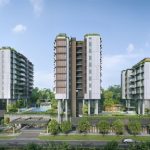If you don’t know the tips and tricks on how to nail parking your car the first time, parking can be one of the most frustrating manoeuvres on the road. Parking Made Easy is a lifesaver for car owners and parking providers everywhere. We bring together people who can help each other, contributing to reduced ..We provide parking tips for three of the most common parking situations.
Many supermarkets and shopping centers use parallel parking bays at their complexes, and these types of spaces are common at supermarkets.
Perpendicular parks are easy to perform if you follow our step-by-step guide.
Locate an appropriate location
When choosing a parking space, you need to make sure it is large enough to fit your car – with bays, this is easier (guidance), but there are times when you have to decide for yourself (i.e. when you park in reverse parallel between two cars).
It can be tricky to gauge the distance between two cars since cars are roughly 50% bigger now than they were in the past. When determining whether your car will fit (if not in a bay), use mirrors and general awareness of the distance between two other cars.
Make sure your mirrors are clear
When you’re parking, you should be aware of anyone approaching from behind, whether they’re reversing or pulling straight into a spot.
When you check your rearview mirror, you’ll be able to decide whether to let the car go past you or to wait until you park – but ensuring it’s safe before parking allows you to make sure the maneuver is safe.
Be sure to check your wing mirrors and blind spots as well, particularly on the side where you will park. The rearview mirror tends to cover you from other vehicles behind, but cyclists, pedestrians, and motorcycles may still overtake you if they see you slowing down.
Your parking location should be indicated
Once you’ve found a parking spot and checked your mirrors, you need to inform those around you in which direction you’re parking. In this way, you’ll be less likely to be overtaken before you pull into the parking space, but you should still check your mirrors and blind spots to ensure it’s still safe before pulling in.
A good angle should be maintained when positioning the car
The best angle for parking straight and within the designated lines/spaces is one that allows you to fit in the first time. It may be necessary for some longer cars to reverse a little to give the nose of the car enough space between the other two cars.
You’ll have enough space to fit into the space once you can see the bottom of the car’s rear bumper.
Position your door mirror in the center of the space, but one away from where you want to park
It is for bay parking, where there is a space to the left or right of your car.
It’s not necessary for your door mirror to be directly parallel to the bay in the center of the space when we say align it in the center of the space. In essence, you should be able to maneuver into the mirror from your driving position if it appears to be in the center.
Having positioned your door mirror in the middle of the space but one from where you wish to park, creep forward while turning the wheel a full revolution. You should make sure your front end does not collide with any parked cars next to the free space before accelerating. Your parking will not be completed if you are too close to another vehicle. To create more space, reverse back.
Make sure your car’s rear is aligned for smooth reversing
Reverse perpendicular parking requires you to drive past the parking spot you want to pull into in order to get in the first time.
As with a normal perpendicular park, start by finding an empty bay, checking your rearview mirrors for approaching cars, and indicating towards it. If a car or bike is behind you, it is important to indicate before you pass the parking spot, so they can give you enough room to do this or go around you when it is safe to do so.
To get the best angle for reversing into the bay, align your car’s rear with the second line of the space next to the one you want to park in. You should position your car correctly before reversing according to the diagram below.






